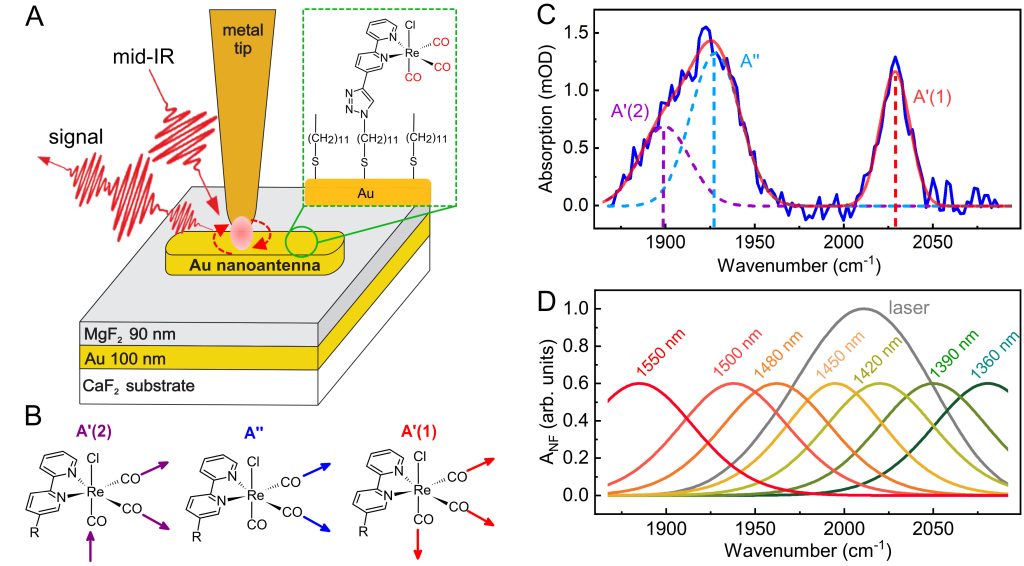Antenna-coupled infrared nanospectroscopy of intramolecular vibrational interaction
| REVIEWS AND HIGHLIGHTS | QUANTUM SCIENCE | MOLECULAR AND SOFT-MATTER | ULTRAFAST NANO-OPTICS AND NANOPHOTONICS | MINERALOGY AND GEOCHEMISTRY |
|---|
Roland Wilcken, Jun Nishida, Johan F. Triana, Aurelian John-Herpin, Hatice Altug, Sandeep Sharma, Felipe Herrera, and Markus B. Raschke
PNAS, 20, 120 (2023).
DOI PDF SI

Many photonic and electronic molecular properties, as well as chemical and biochemical
reactivities are controlled by fast intramolecular vibrational energy redistribution
(IVR). This fundamental ultrafast process limits coherence time in applications from
photochemistry to single quantum level control.While time-resolved multidimensional
IR-spectroscopy can resolve the underlying vibrational interaction dynamics, as a
nonlinear optical technique it has been challenging to extend its sensitivity to
probe small molecular ensembles, achieve nanoscale spatial resolution, and control
intramolecular dynamics. Here, we demonstrate a concept how mode-selective coupling of vibrational resonances to IR nanoantennas can reveal intramolecular vibrational energy transfer. In time-resolved infrared vibrational nanospectroscopy, we measure the Purcell-enhanced decrease of vibrational lifetimes of molecular vibrations while tuning the IR nanoantenna across coupled vibrations. At the example of a Re-carbonyl complex monolayer, we derive an IVR rate of (25 ± 8) cm−1
corresponding to (450 ± 150) fs, as is typical for the fast initial equilibration between symmetric and antisymmetric carbonyl vibrations. We model the enhancement of the cross-vibrational relaxation based on intrinsic intramolecular coupling and extrinsic antenna-enhanced vibrational energy relaxation. The model further suggests an anti-Purcell effect based on antenna and laser–field–driven vibrational mode interference which can counteract IVR-induced relaxation. Nanooptical spectroscopy of antenna-coupled vibrational dynamics thus provides for an approach to probe intramolecular vibrational dynamics with a perspective for vibrational coherent control of small molecular ensembles.
